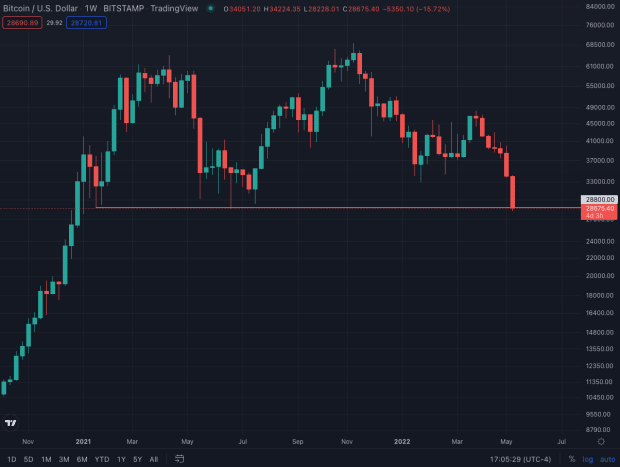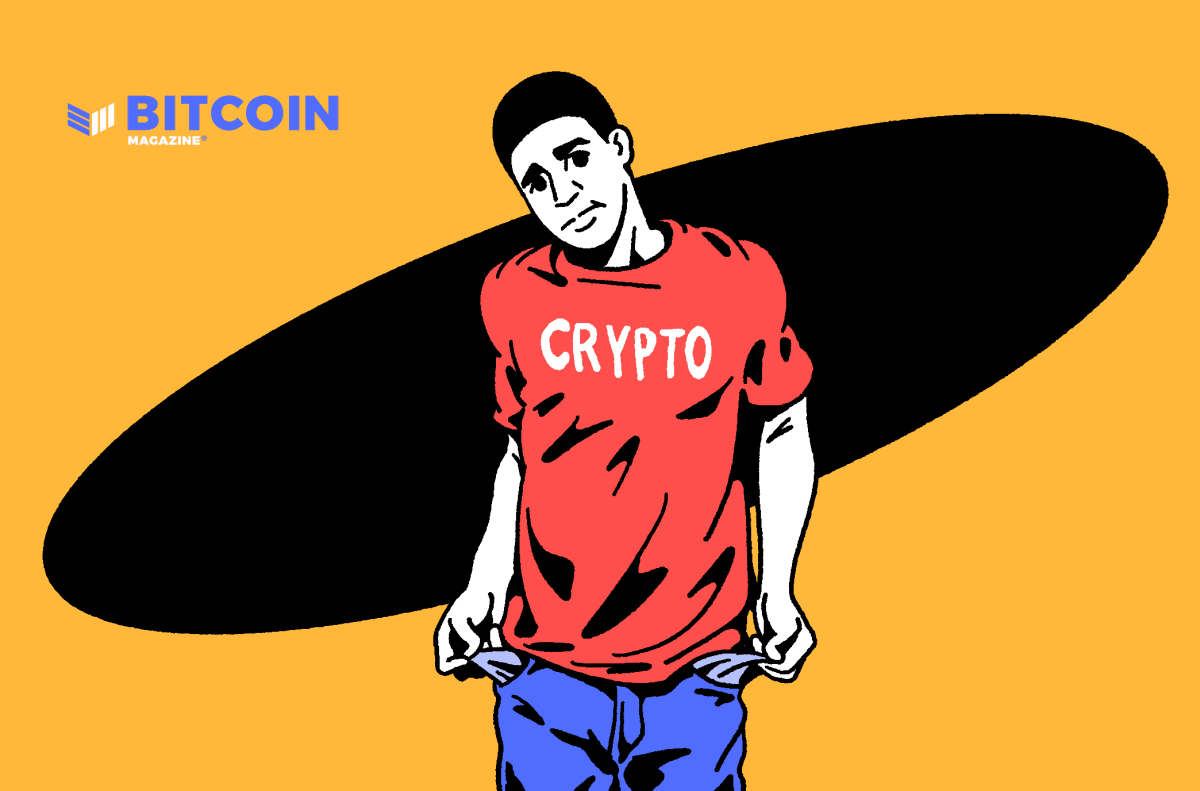The Prophecy Of Satoshi Nakamoto: Bitcoin As Religion
Rituals, terminology and evangelism — there are many aspects of the culture surrounding Bitcoin that resemble religion.
During bitcoin’s parabolic price increase this year, Twitter profiles with laser eyes suddenly emerged. “Anons” and celebrities, such as Elon Musk, added red lasers rays to their portraits and the hashtag #LaserRayUntil100k started to trend. As the hashtag indicated, the laser eyes were added as part of an internet ritual to increase bitcoin’s price to $100,000. But the laser eyes were only the latest expression of Bitcoin’s culture, which ranges from an idiosyncratic terminology (think “HODL,” “number go up” or “nocoiner”) to an emphasis on eating meat and lifting weights. Not surprisingly, critics cited the laser eyes as more evidence for Bitcoiners’ cult-like behavior.
But if we dismiss these cult-like rituals, we simply fail to understand their significance for Bitcoin’s adoption. Indeed, if we want to understand Bitcoin and its parabolic growth — which, over 10 years, increased from zero to more than $1 trillion — we have to recognize Bitcoin’s quasi-religious dimension, which reveals itself in the beliefs of some of the most committed supporters and their exegesis of Nakamoto’s code and writings.
It’s the commitment and excessive enthusiasm of these developers and early adopters that have been driving Bitcoin’s development and adoption since its invention a decade ago. In other words, the evangelism of Bitcoin adopters — which are often dismissed as “believers,” “evangelists” or “cultists” — is an essential feature of Bitcoin’s technological diffusion.
Not just the online rituals of Bitcoiners but also Bitcoin’s genesis itself reveals a deep resemblance with religion. Similar to religion, Bitcoin has its own founding myth: it begins as an obscure and radically novel technology that was invented by a mysterious pseudonymous creator that has, later, completely disappeared.
One of the most salient features, of course, is the resemblance between Satoshi Nakamoto and religious leaders, such as Jesus Christ and his sacrifice for his belief. Whereas Christ died by crucifixion as a sacrifice to achieve atonement for sin, Nakamoto most likely sacrificed his estimated 1,148,800 bitcoin — which never moved from the original wallet — for his messianic, techno-libertarian vision of a decentralized alternative to fiat currencies and central banking.
Bitcoin itself — the protocol with its hard-coded 21 million supply — has, in turn, become a transcendent absolute beyond human control and manipulation that represents a universally valid and quasi-divine truth.
Similarly, the centrality of the white paper can be analogized to sacred scripture in religions. The mythologized absence of Nakamoto — often referred to as Bitcoin’s “immaculate conception” — has, in turn, stimulated competing exegeses of the white paper that aim to recover the true meaning of Nakamoto’s code and writings.
Over the past decade, incompatible interpretations of the white paper relating to technical features, such as block size limits, have triggered a series of so-called hard forks. Bitcoin Cash, for example, emerged in the summer of 2017 from developers’ disagreement about the block size and transaction throughput. The Bitcoin Cash–fork bifurcated Bitcoin not only into two different protocols but also into splintered “sects” that are guided by different visions of Bitcoin’s future.
So-called Bitcoin maximalists, for example, envision bitcoin foremost as a form of digital gold, that is, a decentralized store of value. This view emphasizes bitcoin as a “sound” alternative to fiat currencies. Given bitcoin’s finite and asymptotic supply, supporters of this view — which, because of its monetary network effects, consider bitcoin to be the only legitimate cryptocurrency — believe that bitcoin represents a digital store of value. In contrast, proponents of Bitcoin forks, such as Bitcoin Cash, envisioned that Bitcoin will primarily facilitate individual small-value transactions.
Culturally, as a consequence of these bifurcating views of Bitcoin, different communities on Twitter, mailing lists and online forums have organized around conflicting interpretations of the white paper and original Bitcoin source code, which represent two of the most sacred objects of Bitcoin. Naturally, for some of the more radical believers in the original vision of Nakamoto, the creation of altcoins — that is, cryptocurrencies that either directly copy Bitcoin’s source code or incorporate some of its technical or conceptual properties — is, in Bitcoin’s eschatology, equalized to heresy. Not surprisingly, the heresy of attempting to clone Bitcoin’s “immaculate conception” requires some Bitcoin maximalists to excommunicate altcoins and their developers and supporters from Bitcoin-related forums, social media platforms and meetups.
As Bitcoin full-node operators choose which vision of Bitcoin they support by running the software that enforces the protocol rules, running nodes can be reinterpreted as one of the foundational ritual practices of Bitcoin. The ritual of running a Bitcoin node represents the social process that decides upon, implements and enforces a set of transaction and block-verification rules, which network participants can adopt. By adopting the same set of validation rules, network participants form an intersubjective consensus about what constitutes “Bitcoin.” Dissenting network participants — which correspond to heretics — can only deviate from this intersubjective definition of Bitcoin by “hard forking” the protocol. By upgrading a copied version of the Bitcoin software to a new set of transaction and block-verification rules, the protocol becomes compatible with their belief and interpretation of the white paper.
Analogous to religions, early disciples are critical in diffusing bleeding-edge technological innovations. For example, technology entrepreneur Wences Casares proselytized Nakamoto’s utopian prophecy among Silicon Valley venture capitalists. In the early stages of Bitcoin, a small group of die-hard believers, such as libertarian technologists and cypherpunks, started to experiment with the technology when it was still in its proof-of-concept phase. Early adopters then started to improve the Bitcoin software.
This extreme belief of early Bitcoin adopters, in turn, triggered the interest of early speculators and investors, which were, often, ideologically motivated to invest in the technology. It was this inflow of capital and interest that triggered the first Bitcoin bubbles in 2012 and 2013.
After the peak — when bitcoin, for the first time, reached a price of more than $1,000 in November 2013 — the bubble collapsed and interest decreased substantially. Eventually, bitcoin’s price bottomed and formed a plateau that attracted a new cohort of new believers and investors who appreciated the importance of the technology. Bitcoin’s price plateau persisted for two years before a new bubble gradually started to form in 2015. A new base of adopters has, over the prolonged bear market that lasted from 2013 to 2015, formed for the next iteration of the hype cycle. The next two bubbles, which, in 2017 and 2021, resulted in unprecedented hype and attention, attracted an even larger set of adopters.
These cycles of Bitcoin bubbles, which have given rise to accelerating prices and increasing media attention, have created a self-validating feedback loop that is continually reinforcing the belief and commitment of Bitcoin Core developers, entrepreneurs, or speculators.
Bitcoin’s history, which is punctuated by these fractally repeating and exponentially increasing series of bubbles and hype cycles, shows that the extreme commitment and quasi-religious belief in the technology have been critical for bootstrapping the network and cryptocurrency into existence.
Now, while the religious dimension of Bitcoin is fundamentally important in the process of technology adoption and diffusion, we obviously can’t simply believe in Bitcoin for it to become successful. Money — in a free market — tends to converge on a single standard. In order for liquidity to gravitate to one cryptocurrency, its incentive design and protocol architecture must be vastly superior to any other competitor.
Bitcoin has objectively superior properties that are hard to replicate by altcoins. You can fork Bitcoin, but you can’t copy, for example, its network effects, the long track record of network reliability, or the self-reinforcing reflexive feedback loops that drive Bitcoin’s price, liquidity and security.
But coupled with its technical properties, the extreme beliefs and commitments of core developers, “HODLers” and entrepreneurs have, over the last decade, boosted Bitcoin’s market cap from zero to more than $1 trillion, and the network from one user — Satoshi Nakamoto himself — to more than 16,000 nodes. After all, as the history of Christianity, for example, demonstrates, a group of committed believers can have quite an impact.
As investor Peter Thiel once remarked: “The best startups might be considered slightly less extreme kinds of cults. The biggest difference is that cults tend to be fanatically wrong about something important. People at a successful startup are fanatically right about something those outside it have missed.”
It’s going to be interesting to witness what happens when more and more converts start to believe in the prophecy of Satoshi Nakamoto.
So far, the Bitcoin cult has been fanatically right.
Many thanks to Byrne Hobart and Michael Goldstein.
For a more detailed paper on the social dynamics of Bitcoin, see Tobias Huber and Didier Sornette, “Boom, Bust, and Bitcoin: Bitcoin-Bubbles As Innovation Accelerators.”
This is a guest post by Tobias Huber. Opinions expressed are entirely their own and do not necessarily reflect those of BTC Inc or Bitcoin Magazine.









